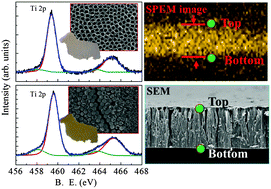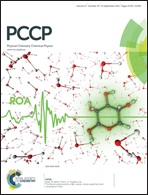Electronic properties of free-standing TiO2 nanotube arrays fabricated by electrochemical anodization
Abstract
Nanotubular TiO2 has attracted considerable attention owing to its unique functional properties, including high surface area and vectorial charge transport along the nanotube, making it a good photocatalytic material. Anodic TiO2-nanotube (TiNT) arrays on a Ti foil substrate were prepared by electrochemical anodic oxidation and SEM/HRTEM/XRD analyses have suggested that the walls of TiO2 tubes are formed from stacked [101] planes (anatase). Both HRTEM and XRD indicate an interplanar spacing of d101 = 0.36 nm in the wall structure. Despite the large amount of work done on nanotube synthesis, a thorough investigation of the electronic and atomic structures of free-standing TiNT arrays has not yet been carried out. X-ray absorption spectroscopy (XAS), resonant inelastic X-ray scattering (RIXS) and scanning photoelectron microscopy (SPEM) are employed herein to examine the electronic and atomic structures at the top and bottom of TiNT arrays. These analyses demonstrate the presence of mixed valence states of the Ti ions (Ti3+ and Ti4+) and a structural distortion at the bottom cap region of the TiNT. Additionally, the results obtained herein suggest the formation of a defective anatase phase at the bottom cap barrier layer between the Ti foil substrate and TiNT during the growth of electrochemically anodized nanotubes.


 Please wait while we load your content...
Please wait while we load your content...